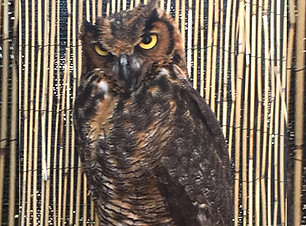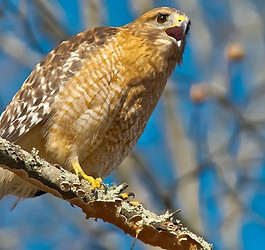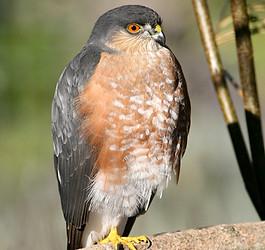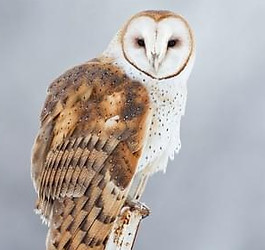Adopt A Bird
Acadiana Wildlife's Adopt a Bird Program is a fun way to learn about and support avian wildlife. When you adopt one of our resident raptors or rehabilitation patients, you help provide the specialized care needed by the birds living at our facility. Plus, you have the pleasure and pride of helping to care for the magnificent birds!
Give a gift to someone special while providing for one of our birds!
By adopting a bird, you provide monetary support for caging, specialized diets, and medication for your animal. In return, you will receive:
-
A personalized certificate with your bird's name and photo
-
The story of how the raptor came to Acadiana Wildlife Education & Rehabilitation
Adoption certificates are available from $25 - $100.
These certificates make a beautiful keepsake and are suitable for framing!
Adopt an Ambassador Bird
_JPG.jpg)
CHIP
Mississippi Kite
Chip is a juvenile Mississippi Kite who came into our care in 2019 as an injured baby. It was later determined that Chip has severe head trauma that causes him/her to have mild seizures. Chip is still non-flighted and completely relies on us for food. Because Chip is so small and because of medical condition Chip spends most of the time in doors. During the warm days Chip spends time outside. Chip loves to eat crickets, super worms, meal worms and the occasional mouse or quail tidbits. Chip is expected to live in captivity for the rest of it’s life. In the wild Mississippi Kite lifespan is 8 years.
Adopt Chip
$50
_JPG.jpg)
HARLEY
Great Horned Owl
Harley came to Rehabilitation as an injured baby over 6 years ago. Harley was found by an elderly woman who wasn’t quite sure what she had found in her yard. When her daughter went to visit her she asked her mom what she had living in her sunroom. The mom replied “ It’s kinda like a parrot but it likes to eat chicken” So, my “chicken eating parrot “ has a fused wing which prevents Harley from flying, Harley is considered a permanent cripple. Harley loves chicken. Harley’s favorite treat is a chicken leg. Harley also eats mice, quail, squirrel rabbit and the occasional deer heart tidbits. In the wild great horned owls life expectancy is 28 years but one Education Ambassador at the San Francisco Zoo celebrated 50 years.
Adopt Harley
$100

HIBOU
Great Horned Owl
Hibou and his/her sibling came to rehabilitation in 2019 as baby owlets who were displaced after a storm blew them out of the nest. They were both rehabilitated and released into the wild on at Acadiana Wildlife property. In an attempt to trap a red tailed hawk for Falconry purposes, Hibou landed on the trap instead. So, Hibou is currently being manned as a Falconry bird. Hibou can also do Educational talks under my Falconry permit. Hibou’s traing is ongoing. Hibou is going through that ugly teenager stage (molting) with the bad hair day. Hibou loves the same food as Harley. And eats almost as much as Harley does. Average 3 to 4 large mice a night, quail, squirrel, rabbit, chicken.
Adopt Hibou
$100
Adopt A Bird Species
RED SHOULDERED HAWK
The red-shouldered hawk is a medium-sized hawk. Its breeding range spans eastern North America and along the coast of California and northern to northeastern-central Mexico. Red-shouldered hawks are permanent residents throughout most of their range, though northern birds do migrate, mostly to central Mexico.
COOPER'S HAWK
Cooper's hawk is a medium-sized hawk native to the North American continent and found from Southern Canada to Northern Mexico. As in many birds of prey, the male is smaller than the female. The birds found east of the Mississippi River tend to be larger on average than the birds found to the west.
EASTERN SCREECH OWL
The eastern screech owl or eastern screech-owl is a small owl that is relatively common in Eastern North America, from Mexico to Canada.
This robin-sized nightbird is common over much of the east, including in city parks and shady suburbs, where many human residents are unaware they have an owl for a neighbor.












